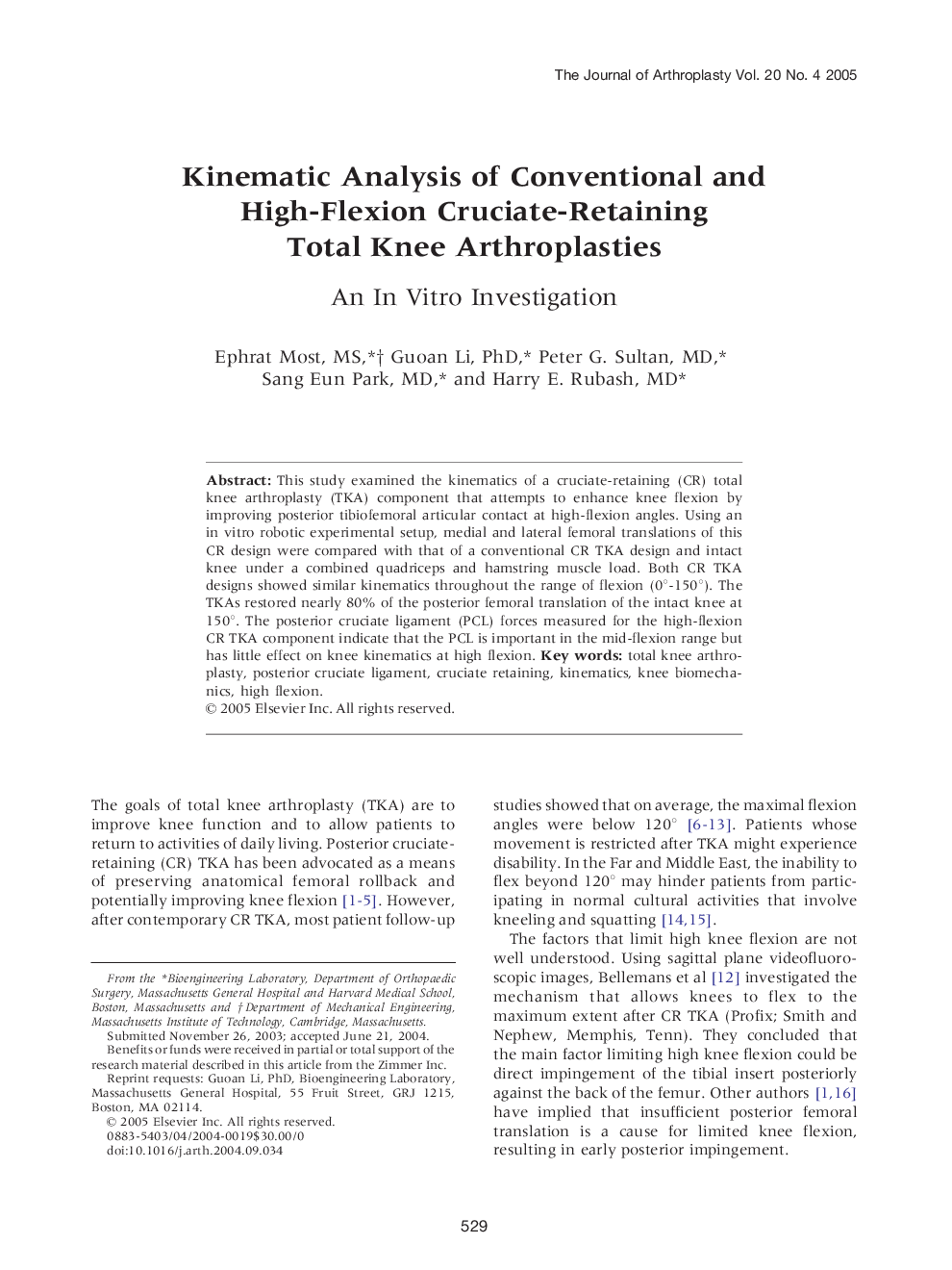| Article ID | Journal | Published Year | Pages | File Type |
|---|---|---|---|---|
| 10081766 | The Journal of Arthroplasty | 2005 | 7 Pages |
Abstract
This study examined the kinematics of a cruciate-retaining (CR) total knee arthroplasty (TKA) component that attempts to enhance knee flexion by improving posterior tibiofemoral articular contact at high-flexion angles. Using an in vitro robotic experimental setup, medial and lateral femoral translations of this CR design were compared with that of a conventional CR TKA design and intact knee under a combined quadriceps and hamstring muscle load. Both CR TKA designs showed similar kinematics throughout the range of flexion (0°-150°). The TKAs restored nearly 80% of the posterior femoral translation of the intact knee at 150°. The posterior cruciate ligament (PCL) forces measured for the high-flexion CR TKA component indicate that the PCL is important in the mid-flexion range but has little effect on knee kinematics at high flexion.
Keywords
Related Topics
Health Sciences
Medicine and Dentistry
Orthopedics, Sports Medicine and Rehabilitation
Authors
Ephrat MS, Guoan PhD, Peter G. MD, Sang Eun MD, Harry E. MD,
